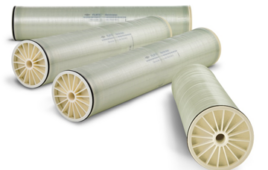Late
last week, the U.S. Environmental Protection Agency confirmed that no
radiation levels of concern entered the continental U.S. following the
containment breach at nuclear reactors in Japan following a
magnitude-8.9 earthquake and subsequent tsunami.
The
confirmation was made possible with the use of two
nationally-recognized devices developed at Pacific Northwest National
Laboratory, which detect nuclear detonations by analyzing the atmosphere
for traces of radioactive material. These systems, which work in
tandem, are located around the globe and are used to monitor
international compliance with the Comprehensive Nuclear-Test-Ban Treaty
(CTBT) by detecting nuclear explosions. The devices are called the
Automated Radioxenon Sampler Analyzer (ARSA) and the Radionuclide
Aerosol Sampler/Analyzer (RASA).
Both
detectors types are deployed worldwide, and were the first to detect
radioactive isotope xenon-133 entering the continental United States on
Wednesday, March 16, 2011. The origin of the materials was consistent
with a release from the Fukushima nuclear reactors in northern Japan a
few days earlier. The levels were extremely low an posed no health
hazard, since the dose rate detected was less than one-millionth of
the amount a person normally receives in one day from background
radiation produced by sources like the sun.
In
1998, DME Corp. and Pacific Northwest National Laboratory were
recognized by R&D Magazine for the development of RASA, which is
often used in concert with ARSA.
Nuclear Radiation Detection — Questions and Answers
What is ARSA and RASA?
Since
the first nuclear test in the years following World War II, the world
has been living under the threat of nuclear attacks. The Comprehensive
Nuclear-Test-Ban Treaty (CTBT), which was adopted in 1996 by the United
Nations’ General Assembly, signed by 150 nations and ratified by more
than 60, requires a network of 80 radionuclide monitoring stations
covering the globe. Many monitors are in place to ensure the success of
the treaty.
Automated Radioxenon Sampler-Analyzer beta-coincidence spectrometer is an integral part of the system. The system analyzes air samples for radioactive xenon. It detects the evidence of the most difficult to detect underground nuclear explosions as well as any evidence of atmospheric radiation resulting from other activity with a sensitivity of 10 to 100 times greater than other systems being used. |
This
subject is just as crucial today as it was during the heyday of U.S.
testing in the 1950s. The provocative nuclear testing undertaken by
India and Pakistan in 1998 showed that testing can escalate
international tensions and could possibly result in a disastrous nuclear
war in which many millions of innocents die.
The
Radionuclide Aerosol Sampler/Analyzer (RASA) and Automated Radioxenon
Sampler Analyzer (ARSA) nuclear explosion identification devices are
fast becoming part of the monitoring arsenal to verify international
compliance with the CTBT. The RASA and ARSA represent a quantum leap
beyond previous monitoring devices, with greater sensitivity, full
automation, near-real time reporting, and novel nuclear radiation
detectors. Radionuclide detection is unique-it is the only method to
provide absolute proof of a nuclear explosion. RASA and ARSA can
definitely prove it was a nuclear explosion, while other technologies
cannot.
The
technologies moved from concept to commercialization in only six years.
Because they are reliable, can collect large sample volumes without
requiring human labor, and inexpensive, RASA and ARSA have been chosen
by the United States and a growing number of other countries to be part
of the monitoring regime to verify international compliance with the
CTBT.
The
RASA detects fission products in the form of particulate debris from
atmospheric nuclear explosions. It filters a huge volume of air each day
to check for evidence of fission products from a nuclear explosion that
attach to dust particles. The automated system draws air through a
series of filters, which remove practically all of the atmospheric
particles. The filters are sealed, bar coded, and then passed to a
radiation detection system. Radiation from weapons debris is then
registered and translated to prove a violation of the treaty.
Researchers at PNNL have created the most sensitive automated
system—more than 100 times as sensitive as the best previous commercial
technology.
The
ARSA analyzes air samples for radioactive xenon, or radioxenon, that
seeps from underground nuclear explosions, the most common testing
method today but the most difficult to detect. ARSA can detect xenon
with a sensitivity nearly 100 times greater than other systems being
used, and is the only automatic system available. ARSA collects air
samples, and processes them to trap the radioactive xenon on cold
charcoal. The system purifies the radioactive xenon, and transfers it to
a nuclear counting system. The different isotopes of xenon are
automatically measured, and the results are automatically passed to a
data center by communication link. Both the ARSA and RASA can be
completely monitored, controlled, and programmed remotely to lower
operating costs.
SOURCE: Pacific Northwest National Laboratory
EPA/DOE statement: Radiation monitors confirm that no radiation levels of concern have reached the United States
The
United States Government has an extensive network of radiation monitors
around the country and no radiation levels of concern have been
detected. The U.S. Environmental Protection Agency RadNet system is
designed to protect the public by notifying scientists, in near real
time, of elevated levels of radiation so they can determine whether
protective action is required. The EPA’s system has not detected any
radiation levels of concern.
In
addition to EPA’s RadNet system, the U.S. Department of Energy has
radiation monitoring equipment at research facilities around the
country, which have also not detected any radiation levels of concern.
As
part of the Comprehensive Nuclear Test Ban Treaty Organization’s
International Monitoring System (IMS), the Department of Energy also
maintains the capability to detect tiny quantities of radioisotopes that
might indicate an underground nuclear test on the other side of the
world. These detectors are extremely sensitive and can detect minute
amounts of radioactive materials.
Today,
one of the monitoring stations in Sacramento, California that feeds
into the IMS detected miniscule quantities of iodine isotopes and other
radioactive particles that pose no health concern at the detected
levels. Collectively, these levels amount to a level of approximately
0.0002 disintegrations per second per cubic meter of air (0.2 mBq/m3).
Specifically, the level of Iodine-131 was 0.165 mBq/m3, the level of
Iodine-132 was measured at 0.03 mBq/m3, the level of Tellurium-132 was
measured at 0.04 mBq/m3, and the level of Cesium-137 was measured at
0.002 mBq/m3.
Similarly,
between March 16 and 17, a detector at the Department of Energy’s
Pacific Northwest National Laboratory in Washington State detected trace
amounts of Xenon-133, which is a radioactive noble gas produced during
nuclear fission that poses no concern at the detected level. The levels
detected were approximately 0.1 disintegrations per second per cubic
meter of air (100 mBq/m3),
The
doses received by people per day from natural sources of radiation –
such as rocks, bricks, the sun and other background sources – are
100,000 times the dose rates from the particles and gas detected in
California or Washington State.
These
types of readings remain consistent with our expectations since the
onset of this tragedy, and are to be expected in the coming days.
Following
the explosion of the Chernobyl plant in Ukraine in 1986 – the worst
nuclear accident in world history – air monitoring in the United States
also picked up trace amounts of radioactive particles, less than one
thousandth of the estimated annual dose from natural sources for a
typical person.
As
part of the federal government’s continuing effort to make our
activities and science transparent and available to the public, the
Environmental Protection Agency will continue to keep all RadNet data
available in the current online database.
SOURCE: EPA.gov





